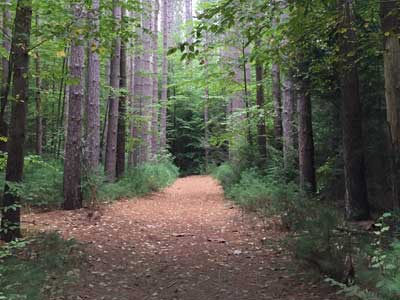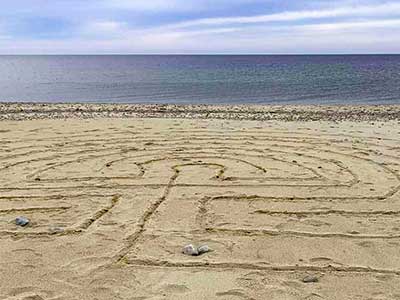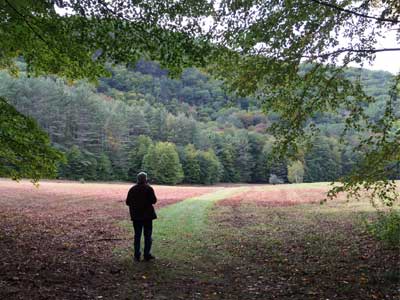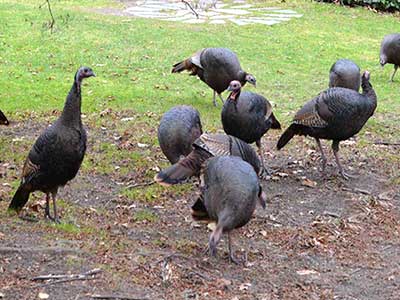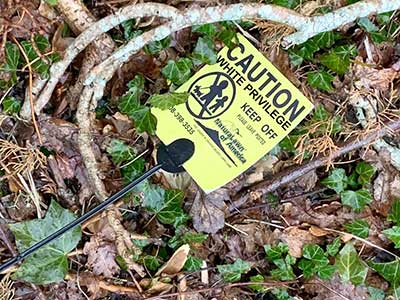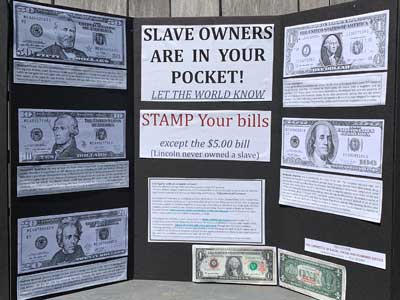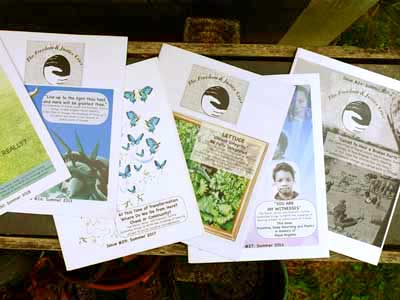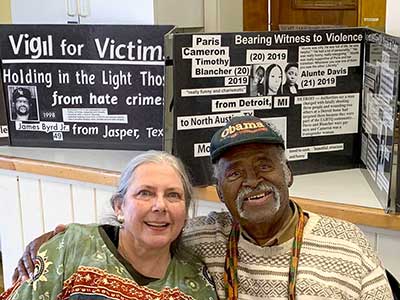by Jennifer Tsai | June 2021
Jordan is now 18, loves dogs, and is more interested in telling me about his college classes than the fact that he was recently hospitalized for seizures, a complication of his illness. He’ll need a kidney transplant soon. He would be closer to getting that kidney transplant, if only he were categorized as white. A patient’s level of kidney disease is judged by an estimation of glomerular filtration rate, or eGFR, which normally sits between 90 and 120 in a patient with two healthy kidneys. In the United States, patients can’t be listed for a kidney transplant until they’re deemed sick enough—until their eGFR dips below a threshold of 20. Jordan is biracial, with one Black grandparent and three white ones. His estimated GFR depends on how you interpret this fact: A white Jordan has a GFR of 17—low enough to secure him a spot on the organ waitlist. A Black Jordan has a GFR of 21.
TAGS: [Assumptions] [2020’s] [Systemic Racism] [White Supremacy] [White Privilege] [White Culture] [Myths] [Black Lives Matter] [Strategies] [Advocacy] [Health Disparities]
Resource Links Tagged with "Myths"
What Really Happened on Juneteenth — and Why It’s Time for Supremacists and Their Sympathizers to Surrender
by Robin Washington | June 2021
If you saw my column about Juneteenth posted here over the last few days, or a previous version on the website of Be’chol Lashon several years ago, or a video version currently presented by Be’chol Lashon, you would know I had bittersweet feelings about the history of the day. I no longer do. I am outraged by it. My change in emotion comes after learning from historian friends that the oft-repeated tale of Union soldiers arriving in Galveston, Texas, on June 19, 1865 to inform enslaved African Americans that they were free is pure fiction. Not because they weren’t legally freed 2-½ months earlier when Confederate Gen. Robert E. Lee surrendered at Appomattox. Or technically freed 2-1/2 years before when President Lincoln issued the Emancipation Proclamation, declaring slavery null and void in areas under rebellion, very much including Texas.
TAGS: [Assumptions] [2020’s] [History] [Slavery] [Myths] [Racial Terrorism] [White Supremacy] [White Culture] [Systemic Racism] [Social Justice]
Black America’s Neglected Origin Stories
by Annette Gordon-Reed | June 2021
The history of Blackness on this continent is longer and more varied than the version I was taught in school. Origin stories matter, for individuals, groups of people, and nations. They inform our sense of self, telling us what kind of people we believe we are, what kind of nation we believe we live in. They usually carry, at least, a hope that where we started might hold the key to where we are in the present. We can say, then, that much of the concern over origin stories is about our current needs and desires, not actual history. Origin stories seek to find the familiar, or the superficially familiar—memory, sometimes shading into mythology. Both memory and mythology have their uses, even if they must be separated from the facts of the past. But in the case of Black people, the limitations of the history and possibility of our origin stories have helped create and maintain an extremely narrow construction of Blackness.
TAGS: [Assumptions] [2020’s] [History] [Myths] [Civil War] [Slavery] [Indigenous] [Black Lives Matter] [White Supremacy] [White Culture] [White Blindness] [Systemic Racism] [Silencing POC] [CRT]
Uncovering Indigenous Worlds and Histories on a Bend of a New England River before the 1650s: Problematizing Nomenclature and Settler Colonial History, Deep History, and Early Colonization Narratives
by Christoph Strobel | February 2022
The essay explores the often-ignored histories of the indigenous people who resided on the confluence of the Merrimack and the Concord rivers up to the 1650s. This place is characterized by a significant bend in the Merrimack River as it changes its southerly flow into an easterly direction. Today, the area includes the modern city of Lowell, Massachusetts, and its surroundings. While the 1650s saw the creation of a Native American “praying town” and the incorporation of the Massachusetts Bay Colony’s towns of Chelmsford and Billerica, it is the diverse and complex indigenous past before this decade which North American and global historians tend to neglect. The pre-colonial and early colonial eras, and how observers have described these periods, have shaped the way we understand history today. This essay problematizes terminology, looks at how amateur historians of the 19th and early 20th centuries have shaped popular perceptions of Native Americans, and explores how researchers have told the history before the 1650s. The materials available to reconstruct the history of the region’s Native Americans are often hard to find, a common issue for researchers who attempt to study the history of indigenous peoples before 1500. Thus, the essay pays special attention to how incomplete primary sources as well as archeological and ethnohistorical evidence have shaped interpretations of this history and how these intellectual processes have aided in the construction of this past.
TAGS: [Strategies] [2020’s] [Indigenous] [History] [Systemic Racism] [Implicit Bias] [Myths] [Politics] [Slavery] [White Supremacy] [White Culture] [Silencing POC] [Health Disparities] [Economics]
Black Lives Matter Protesters Were Overwhelmingly Peaceful, Our Research Finds; The Black Lives Matter Uprisings were Remarkably Nonviolent.
*Paywall Alert
by Erica Chenoweth and Jeremy Pressman | October 2020
When the Department of Homeland Security released its Homeland Threat Assessment earlier this month, it emphasized that self-proclaimed white supremacist groups are the most dangerous threat to U.S. security. But the report misleadingly added that there had been “over 100 days of violence and destruction in our cities,” referring to the anti-racism uprisings of this past summer.In fact, the Black Lives Matter uprisings were remarkably nonviolent. When there was violence, very often police or counterprotesters were reportedly directing it at the protesters. Since 2017, we have been collecting data on political crowds in the United States, including the protests that surged during the summer. We have almost finished collecting data from May to June, having already documented 7,305 events in thousands of towns and cities in all 50 states and D.C., involving millions of attendees.
Because most of the missing data are from small towns and cities, we do not expect the overall proportions to change significantly once we complete the data collection.
TAGS: [Assumptions] [2020’s] [History] [Black Lives Matter] [Policing] [Systemic Racism] [Myths]
The Lewis and Clark Expedition from an Indigenous Perspective; New Federal-Tribal Partnership Will Deepen the Corps of Discovery Journey with Stories from the Many Tribes Who Helped the Explorers Find Their Way
by Wil Phinney | November 2021
“If it wasn’t for Indians, Lewis and Clark probably wouldn’t have made it,” said Gail Chehak, tribal relations and outreach manager at the American Indian Alaska Native Tourism Association (AIANTA), which is collaborating with NPS to develop online itineraries to promote the tribes that intersected with Lewis and Clark on their way across what became the United States. The online guides will include tribal events and sites, designed to help attract visitors ranging from families and bicycle tours to international tourism. Importantly, the stories will reflect the expedition from an Indigenous perspective, as told by the descendants of those who encountered the explorers as they made their way west. Cultural and geo-tourism will be highlighted on two websites, LewisAndClark.travel and NativeAmerica.travel.
TAGS: [Collective Action] [2020’s] [Indigenous] [History] [Assumptions] [Myths] [White Culture]
Broken System Can’t Keep Track of Native Deaths; from Medical Health Privacy Laws to a Maze of Siloed Information Systems, a True Accounting of COVID-19’s Impact on Indian Country is Impossible to Know
by Jourdan Bennett-Begaye, Sunnie Clahchischiligi, and Christine Trudeau | June 2021
In May of 2020, the Navajo Nation reported one of the highest per-capita COVID-19 infection rates in the United States. Since that milestone, official data reveals that the Navajo Nation has been one of the hardest-hit populations during the pandemic. The Navajo Nation boasts the largest population of any Indigenous nation in the United States, and thousands of Navajos live outside the nation, in towns along the border, cities across the country, and in other parts of the world, making it difficult to tally the virus’ impacts on Navajo citizens. It’s made worse by a labyrinthian system of local, state, federal and tribal data-reporting systems that often do not communicate with each other or share information.
TAGS: [Assumptions] [2020’s] [Health Disparities] [Indigenous] [Politics] [Myths] [Systemic Racism] [Silencing POC] [Denial]
The Indigenous Connection to the Underground Railroad
Submitted by Roy Finkenbine | June 2021
Most stories of the Underground Railroad follow the narrative of white people helping Black people escape slavery, but overlook the involvement of Indigenous allies who often risked their own lives to help freedom seekers cross into Canada safely. Historian Roy Finkenbine is among those rewriting that history. He’s working on a book tentatively called, Freedom Seekers in Indian Country, while teaching African American history at the University of Detroit Mercy. He spoke with Falen Johnson, host of Unreserved, about his research on Indigenous involvement in the Underground Railroad, and why he feels a moral obligation to write about it. What questions are you trying to answer in your upcoming book, Freedom Seekers in Indian Country? I’m looking at how and why Native Americans helped freedom seekers. How they helped includes providing sanctuary among their communities – often to boost their populations – and in assisting people to cross the border. They shared a kinship based on a common enemy, if we can use that term, in terms of white expansionism. Many groups like the Ojibwa referred to African-Americans as cousins and brothers. Peter Jones, a [Mississauga] missionary, said, and I’m paraphrasing here, “Negroes,” as he said, “have it even worse because of the iron bands of slavery. So we have an obligation to help.”
TAGS: [Assumptions] [2020’s] [Slavery] [Indigenous] [History] [Myths] [White Culture] [White Privilege] [White Supremacy] [Systemic Racism]
Anthropology, Racial Science, and the Harvesting of Black Bones: Dr. Michael Blakey Interviewed
by Dr. Jemima Pierre | May 2021
Most renowned academic institutions in the United States are implicated in the macabre practices of “racial” science. “They don’t see African Americans as the same real complete human beings that they and their white families and neighbors are.” On Mother’s Day, May 13, 1985, the City of Philadelphia dropped two bombs on the MOVE Organization compound on Osage Avenue , killing 11 people including 5 children. Thirty-six years later, on April 21, 2021 , we learned that two anthropology professors had held on to the bones of two of the MOVE children. Alan Mann, a currently retired forensic anthropologist, had kept the remains of Tree and Delisha Africa in a cardboard box at the University of Pennsylvania Museum, and shuttled them back and forth between his jobs at UPenn and Princeton University. Janet Monge, Mann’s former student and currently a lecturer at both universities, used the bones in an online Princeton anthropology course titled, “Real Bones: Adventures in Forensic Anthropology.”
TAGS: [Strategies] [2020’s] [Racial Terrorism] [History] [White Supremacy] [Black Lives Matter] [Indigenous] [Slavery] [Systemic Racism] [Myths] [Social Justice] [Anti-Racism] [Politics]
Performative Activism Is the New ‘Color-Blind’ Band-Aid for White Fragility; White People Embracing Hashtags Won’t Help Us Destroy Anti-Black Racism. Here’s Why.
by Maia Niguel Hoskin, Ph.D. | June 2020
Because Whites are the nonracialized majority, they live in an insulated environment of racial protection and comfort, which makes them unable to tolerate racial stress. Whiteness scholar Robin DiAngelo refers to this as White fragility and says this about it: Once White people are confronted with racial stress, it triggers various defensive responses in them, such as anger, guilt, silence, outward displays of emotion, defensiveness, and shutting down. Some argue that color-blindness has been used as a way for Whites to accommodate their racial fragility and ease their guilt. Feelings of shame and defensiveness associated with racial injustice can be minimized if its existence is denied. Like color-blindness, performative activism is manipulative and maintains systems of racial privilege by Whites centering their desire to seek comfort over addressing racial injustice.
TAGS: [Assumptions] [2020’s] [Myths] [White Fragility/Tears] [“All Lives Matter”] [White Defensiveness] [White Blindness] [White Supremacy] [Social Justice] [Policing] [Black Lives Matter] [History] [Colorblindness] [Tips-Dos/Don’ts] [Anti-Racism]
What Women’s Suffrage Owes to Indigenous Culture
by Briget Quinn | August 2020
It’s an under-known fact that the “revolutionary” concept of a democratic union of discrete states did not spring fully formed from the Enlightenment pens of the Founding Fathers, like sage Athena from the head of Zeus. No, the idea of “united states” sprang from the Haudenosaunee, collective name for six tribes that comprise the so-called (mostly by non-Natives) Iroquois Confederacy: the Seneca, Oneida, Mohawk, Onondaga, Cayuga, and Tuscarora nations. Should you doubt this, check out Congressional Resolution 331, adopted in 1988 by the 100th Congress of the United States, which says as much. It’s worth noting that the Haudenosaunee Confederacy still thrives today, likely the world’s oldest participatory democracy.
TAGS: [Assumptions] [2020’s] [Collective Action] [History] [Indigenous] [Myths] [Politics] [Silencing POC] [Systemic Racism] [White Blindness] [White Culture] [White Fragility/Tears] [White Privilege] [White Supremacy]
How Black People Can Be Strong Allies to Asian Americans Right Now
by Char Adams | March 2021
“A big part of how to be allies in this moment is advocating with us,” said Alvina Wong, of the Asian Pacific Environmental Network. Thousands of hate incidents against Asian people across the country have been documented by advocacy groups in the last year, ranging in severity from spitting to the unprovoked push of an 84-year-old Thai American man in San Francisco who died of his injuries a few days later. These incidents have prompted the renewal of conversations about security in Asian American neighborhoods, privilege, solidarity and even anti-Blackness in response to the violence. That last element, activists say, devalues the decades of coalition building and allyship between Asian American and Black communities. But Russell Jeung, a professor of Asian American studies at San Francisco State University and co-founder of Stop AAPI Hate, notes that efforts to create a racial wedge between such groups only empowers the white supremacy that makes racist violence possible.
TAGS: [Collective Action] [2020’s] [Asian] [Advocacy] [White Supremacy] [Myths] [Tips-Dos/Don’ts] [Policing] [Social Justice] [Anti-Racism] [Accountability] [Bystander Intervention]
The Samuel George Morton CRANIAL COLLECTION; Historical Significance and New Research
by Emily S. Renschler and Janet Monge | Month Unknown 2008
Although few visitors to the Museum would know this, the Samuel George Morton cranial collection at the University of Pennsylvania Museum of Archaeology and Anthropology is one of the most famous collections of human skulls in the entire world. Its presence in Philadelphia is the result of the collecting activities of Samuel George Morton (1799–1851), a Philadelphian who actively participated in the vibrant medical and scientific community that spanned the Atlantic Ocean in the early 19th century.
TAGS: [Assumptions] [2020’s] [Art & Culture] [History] [Slavery] [Indigenous] [Black Lives Matter] [Latino/a] [Myths] [White Supremacy] [White Privilege] [White Culture] [Systemic Racism]
White Women’s Role in White Supremacy, Explained; Women at the Capitol Riot are Just the Latest Reminder of a Long History
by Anna North | January 2021
It’s tempting to think of the storming of the US Capitol on Wednesday as toxic masculinity run amok: a mob of mostly white men, carrying guns and wearing animal skins, trying to overthrow democracy on behalf of a president who once bragged about his ability to grab women “by the pussy.” It’s even more tempting to embrace this narrative when, in a bizarre statement, that president’s campaign press secretary describes him as “the most masculine person, I think, to ever hold the White House.”
But focusing too much on masculinity obscures a crucial truth: Many women were either present at the riot or cheering on the insurrectionists from back home. There was Ashli Babbitt, the 35-year-old Air Force veteran and apparent devotee of QAnon ideology who was killed during the riot. There was the woman photographed with “zip-tie guy” Eric Munchel, now believed to be his mother. There was Martha Chansley, the mother of the widely photographed “QAnon shaman” who wore a horned hat and carried a spear to Congress. She wasn’t present at the riot but later defended her son in an interview, calling him “a great patriot, a veteran, a person who loves this country.”
TAGS: [Assumptions] [2020’s] [White Supremacy] [White Culture] [White Blindness] [White Defensiveness] [White Privilege] [Politics] [Black Lives Matter] [Civil War] [Myths] [Slavery] [Economics] [History] [Calling Police] [Systemic Racism]
Understanding Africa: Shattering Myths about the Culture of the Second-Largest Continent
by Aukram Burton | February 2021
African culture is vastly misunderstood in western societies. This misunderstanding continues to be perpetuated by educational and media institutions in the Western world that consistently misrepresent the image and contributions of African culture and ethics to the world. For centuries, European-centric thinking has justified colonialism and imperialism as a “civilizing mission” meant to save the African “savages” who live in “sh–holes” often characterized by terms like “exotic,” “primitive” or “pagan,” which is a misconception. This thinking is rooted in the age of European Enlightenment in the 17th and 18th centuries. This movement provided an intellectual backdrop for European theories about human differences.
TAGS: [Assumptions] [2020’s] [Myths] [History] [Definitions] [Slavery] [Systemic Racism] [White Supremacy] [Economics] [White Blindness]
White Suffragettes Chose White Supremacy over Collective Liberation
by Reina Sultan | January 2020
White women love saying some variation of, “We are the granddaughters of the witches you could not burn”—even though no “witches” were actually burned at the stake during the Salem Witch Trials. It would be more accurate for them to say, “We are the granddaughters of the Suffragettes who sold out Black and brown women for their own political gain.” Because white women have been choosing whiteness since they fought for the right to vote.
TAGS: [Assumptions] [2010’s] [Systemic Racism] [History] [White Supremacy] [White Culture] [White Privilege] [White Blindness] [Politics] [Indigenous] [Myths] [Silencing POC] [White Fragility/Tears] [Collective Action]
This African American Woman Got No Credit for Designing the Image of Roosevelt on the U.S Dime in 1944
by Elizabeth Ofosuah Johnson | August 2018
Selma Burke was born on December 31, 1900, and was the 7th of ten children to her parents. Her father worked in the railway service and was a church minister, while her mother was a stay at home mom. At a very young age, Selma showed artistic skill and would often draw or carve objects out of used paper and cardboard. … In 1943, Selma entered a national competition which she won. Sponsored by the Fine Arts Commission in Washington D.C, the competition was to create a profile portrait of the then U.S. President Franklin Delano Roosevelt with a granted commission. Selma then wrote a letter to the president and was invited to the White House to do her sketch.
TAGS: [Assumptions] [2010’s] [Systemic Racism] [History] [Art & Culture] [Silencing POC] [Myths] [Black Lives Matter] [Denial] [White Culture] [White Privilege] [White Supremacy]
What Do We Do About John James Audubon?
by J. Drew Lanham | Spring 2021
The founding father of American birding soared on the wings of white privilege. The birding community and organizations that bear his name must grapple with this racist legacy to create a more just, inclusive world. Last summer, the Sierra Club denounced its first president, John Muir, as a racist unworthy of organizational adulation. Muir is a founding father of the American wilderness movement; he also characterized Blacks as lazy “sambos” and Native Americans as “dirty.” The National Audubon Society followed suit, stating that Audubon, too, was a racist. He enslaved at least nine people. He mostly referred to them as “servants” and “hands,” but never seemed especially concerned that the people helping him could be bought, sold, raped, whipped, or killed on a whim. Then again, relatively few men of his time did. Presidents did not. Why would he? Audubon’s callous ignorance wouldn’t have been unusual for a white man. It would have been de rigueur—an expectation of race and class that he enjoyed.
TAGS: [Collective Action] [2020’s] [Slavery] [History] [White Supremacy] [White Culture] [White Privilege] [Accountability] [Systemic Racism][-ing While Black] [Environment] [Myths] [Black Lives Matter] [Indigenous] [Implicit Bias] [Cognitive Dissonance] [Art & Culture]
How the History of Blackface Is Rooted in Racism
by Alexis Clark | February 2019
Blackface began in the US after the Civil War as white performers played characters that demeaned and dehumanized African Americans. The portrayal of blackface–when people darken their skin with shoe polish, greasepaint or burnt cork and paint on enlarged lips and other exaggerated features, is steeped in centuries of racism. It peaked in popularity during an era in the United States when demands for civil rights by recently emancipated slaves triggered racial hostility. And today, because of blackface’s historic use to denigrate people of African descent, its continued use is still considered racist. “It’s an assertion of power and control,” says David Leonard , a professor of comparative ethnic studies and American studies at Washington State University. “It allows a society to routinely and historically imagine African Americans as not fully human. It serves to rationalize violence and Jim Crow segregation.”
TAGS: [Collective Action] [2010’s] [History] [Systemic Racism] [Civil War] [White Supremacy] [White Culture] [White Privilege] [Art & Culture] [Assumptions] [Myths] [White Blindness] [Social Justice] [Economics]
Teaching America’s Truth
*Paywall Alert
by Joe Heim | August 2019
For generations, children have been spared the whole, terrible reality about slavery’s place in U.S. history, but some schools are beginning to strip away the deception and evasions. “Think about this. For 246 years, slavery was legal in America. It wasn’t made illegal until 154 years ago,” the 26-year-old teacher told the 23 students sitting before him at Fort Dodge Middle School. “So, what does that mean? It means slavery has been a part of America much longer than it hasn’t been a part of America.” It is a simple observation, but it is also a revelatory way to think about slavery in America and its inextricable role in the country’s founding, evolution and present.
TAGS: [Assumptions] [2010’s] [Slavery] [History] [Collective Action] [Myths] [White Culture]
Nez Perce Tribe reclaims 148 acres of ancestral land in Eastern Oregon
by Cassandra Profita | December 2020
The Nez Perce Tribe is reclaiming an ancestral village site in the Eastern Oregon town of Joseph more than a century after being pushed out the area. This month, the tribe purchased 148 acres of an area known as “the place of boulders,” or Am’sáaxpa. Chief Joseph held council on the ridge above, before a sweeping view of the Wallowa Mountains. Hundreds of tribal members would camp there at the peak of the fishing season and catch sockeye salmon along the Wallowa River. “There’s a lot of excitement buzzing around,” Nez Perce Tribal Executive Committee Chairman Shannon Wheeler said. “We feel fortunate to be at this juncture in time to be able to say that we are on our way home. We feel the landscape misses us, and we miss the landscape.”
TAGS: [Strategies] [2020’s] [Indigenous] [History] [Environment] [Systemic Racism] [Myths] [White Supremacy] [White Culture] [White Blindness] [Advocacy]
The 1950s: Long Live the Lumbee
by Philip Gerard| July 2019
The Native Americans of Robeson County are strong and proud, but their history is marked by the struggle to overcome bias. In the 1950s, a watershed moment brings national attention to the Lumbee Tribe.
Through the early decades of the 20th century, the Lumbee Indians were not much known outside of Robeson County in the southeastern part of the state — though their forebears settled there by at least 1754, when an agent for colonial Gov. Arthur Dobbs discovered some 50 families living at the headwaters of the Little Pee Dee. His description was less than flattering: “a lawless People [who] possess the Lands without patent or paying quit rents.” Thus began a long history with white settlers during which the Lumbee struggled to gain respect.
TAGS: [Assumptions] [2010’s] [Indigenous] [History] [Implicit Bias] [Myths] [Politics] [Systemic Racism] [Denial] [White Supremacy] [Health Disparities] [Racial Terrorism] [Justice System]
After Attempted Coup, We Must Fight White Supremacy and Sow Revolutionary Love
by Adrienne Maree Brown | January 2021
The confederacy, whose flag was waved in the Capitol building on Wednesday, was a four-year alignment of 11 states committed, among other things, to the right to own slaves. It emerged toward the end of a centuries-long period during which it was easily assumed that the role of people of African descent was to provide free labor until death. The foundations of U.S. wealth and reach are heavy bricks sunken into the bloody soil of that labor. There are many flags that could be created and waved if the issue at hand were the right of states to self-determine their own destinies, but those who claim the U.S. confederacy are easily aligning with a very specific and racist right, a very specific white supremacy.
TAGS: [Collective Action] [2020’s] [White Supremacy] [Slavery] [History] [Economics] [Civil War] [Systemic Racism] [Black Lives Matter] [Myths] [Denial] [Politics]
The Lies We Tell Ourselves about Race
by Sam Sanders | January 2021
There is a lie some Americans tell themselves when America is on its worst behavior: “This isn’t America!” or “This isn’t who we are!” or “We’re better than this!” You heard versions of this lie again this past week after armed insurrectionists stormed the U.S. Capitol on urging from President Trump, attempting to undo the results of last November’s election. Even in the halls of Congress, after the broken glass was cleared and U.S. senators and representatives were allowed back into their chambers from undisclosed locations, Republican Sen. Ben Sasse of Nebraska came back to this refrain: “Our kids need to know that this isn’t what America is.” We are a country built on fabrication, nostalgia and euphemism. And every time America shows the worst of itself, all the contradictions collapse into the lie I’ve heard nonstop for the last several years: “This isn’t who we are.”
TAGS: [Strategies] [2020’s] [Systemic Racism] [Accountability] [Civil War] [White Blindness] [White Defensiveness] [White Culture] [White Supremacy] [White Fragility/Tears] [Economics] [Politics] [Cognitive Dissonance] [Myths]
This Waltz Once Attributed to Strauss Is Actually by Indigenous Mexican Composer Juventino Rosas
by Stephen Raskauskas | May 2017
The waltz is typically associated with composers from German-speaking countries. The word waltz is, after all, German. Viennese composers like Beethoven and Schubert composed waltzes. Viennese composer Johann Strauss II was known as the “Waltz King.” But at the same time that the Viennese were waltzing around ballrooms and clinking their champagne glasses, the people of Mexico were enjoying waltzes, too, many of which were composed in Mexico. One of the most famous waltz composers in Mexico was Juventino Rosas. He was born in 1868 in Santa Cruz de Galeana to parents who were Otomí. The Otomí people are one of many indigenous groups in Mexico. In 2015, over 25,000,000 people living in Mexico identified as indigenous.
TAGS: [Assumptions] [Indigenous] [2010’s] [Latino/a] [Myths] [Art & Culture] [Implicit Racism] [History] [Silencing POC]
Uncle Tom Was a Man Who Refused to Beat Black Woman….
by gamma | January 2020
Most Black folks have heard or used the term Uncle tom when we refer to a sell-out, or someone we feel is tap dancing for the attention and acceptance of other races. It has always been used in a derogatory manner to infer that this was the type of person who cozied up to his slave master, but did you know that the inference and analogy is totally wrong? … His name? Josiah Henson! Josiah Henson was an author, abolitionist, and minister. Born into slavery, in Port Tobacco, Charles County, Maryland, he escaped to Upper Canada in 1830, and founded a settlement and laborer’s school for other fugitive slaves at Dawn, near Dresden, in Kent County, Upper Canada, of British Canada.
TAGS: [Assumptions] [2020’s] [Myths] [Slavery] [History] [Denial] [Teachers]
From Most Hated to American Hero: The Whitewashing of Martin Luther King Jr.
by Michael Harriot | April 2018
This week, America will commemorate the 50th anniversary of the assassination of the Rev. Martin Luther King Jr., the most famous and beloved civil rights leader in the nation’s history. Lost in the remembrance of the death of our nation’s most heralded warrior for social justice is the fact that—at the time of his death—King was a man in exile. Contrary to popular belief, when King died, he was not an icon of freedom and equality. In fact, most of the country disliked him. Sadly, on April 4, 1968, a bullet splattered bits of Martin Luther King Jr.’s brains and blood across the balcony of Memphis, Tenn.’s Lorraine Motel. Then, and only then, was white America ready to make him a hero.
TAGS: [Strategies] [2010’s] [Myths] [History] [White Culture] [White Defensiveness] [Collective Action] [Role Model] [Social Justice] [Assumptions] [White Blindness] [Silencing POC] [Systemic Racism]
Field Correction: Race-Based Medicine, Deeply Embedded in Clinical Decision Making, is Being Scrutinized and Challenged
by Stephanie Dutchen | December 2020
A young Black man arrives in the emergency room, doubled over in pain from a sickle cell crisis. “It’s an act,” says the attending physician dismissively. “I think he just wants drugs.” The attending refuses to prescribe the opioids he might give to a white patient in similar straits. Andrea Reid, MD ’88, associate dean for student and multicultural affairs for the Program in Medical Education and director of the Office of Recruitment and Multicultural Affairs at Harvard Medical School, witnessed too many such scenes as a trainee in Boston-area hospitals in the 1980s and ’90s. “It was awful,” she says. “There was bias that reflected in the management of some patients, especially those who didn’t look like they were in pain.” After watching this scenario play out in the emergency department and on the wards, Reid quietly began to direct some of the sickle cell patients toward her outpatient clinic for continuity care. … Many clinicians have heard or been formally taught that Black people don’t feel pain as acutely as white people because they have different biology. Black bodies have fewer nerve endings than white bodies, they’ve been told. Black skin is thicker than white skin, they’ve learned. Digging deeper reveals that these notions, as old as transatlantic slavery, have no evidence behind them. Yet a 2016 survey in PNAS of white medical students and residents found that half of the respondents still believe and act on them.
TAGS: [Assumptions] [2020’s] [Systemic Racism] [Health Disparities] [Myths] [Implicit Bias] [White Supremacy] [White Culture] [White Blindness] [Denial] [History] [Indigenous] [Asian] [Latino/a] [White Privilege]
Alexander Hamilton, Enslaver? New Research Says Yes; A Paper by a Researcher at the Schuyler Mansion Finds Overlooked Evidence in Letters and Hamilton’s Own Account Books Indicating That He Bought, Sold and Personally Owned Slaves.
by Jennifer Schuessler | November 2020
“Not only did Alexander Hamilton enslave people, but his involvement in the institution of slavery was essential to his identity, both personally and professionally,” she writes. “It is vital,” she adds, “that the myth of Hamilton as ‘the Abolitionist Founding Father’ end.” The evidence cited in the paper, which was quietly published online last month, is not entirely new. But Ms. Serfilippi’s forceful case has caught the eye of historians, particularly those who have questioned what they see as his inflated antislavery credentials.
TAGS: [Assumptions] [2020’s] [Slavery] [White Supremacy] [White Culture] [White Privilege] [Art & Culture] [Denial] [Myths]
Going Beyond the Myth This Thanksgiving
by Maia Coleman | November 2020
“I contend that the Thanksgiving myth is just that — it’s a myth, it’s not history,” said Mr. Silverman. The real story, he explained, features far more bloodshed and destruction, including a European plague that wiped out enormous swaths of the native population, the continued exploitation of native people at the hands of the colonists and above all, the grabbing of native lands. The actual Thanksgiving feast was born from a mutual defense pact between the English colonists and the Wampanoags against the neighboring Narragansett tribe, Mr. Silverman said. “Neither side attributed much importance to this event,” Mr. Silverman told the audience. “The Wampanoags never invoked it again, at least on record in any diplomacy between themselves in the English…and English records dedicated two paragraphs to it.”
TAGS: [Assumptions] [2020’s] [Indigenous] [Myths] [History] [Silencing POC] [White Culture] [White Supremacy] [Denial] [Systemic Racism]
